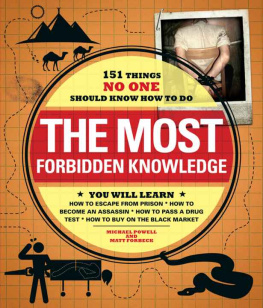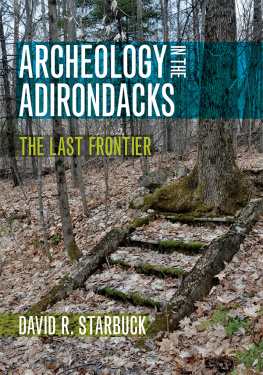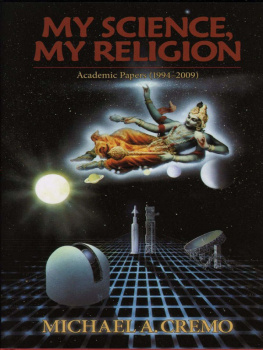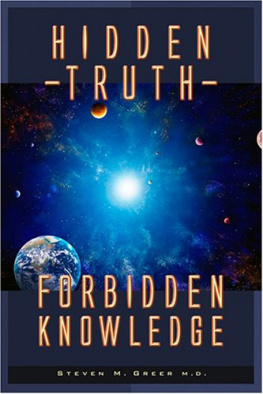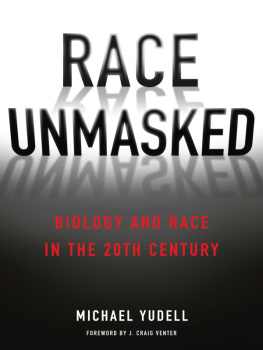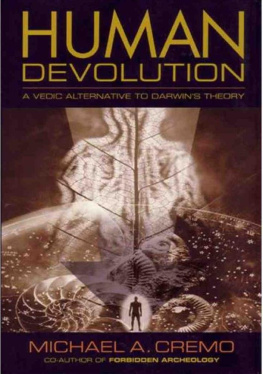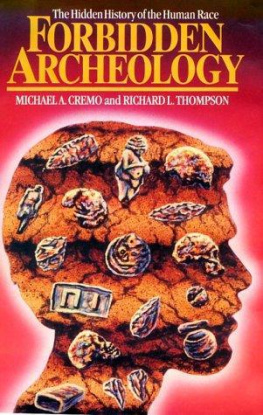Michael Cremo - Forbidden Archeology: The Hidden History of the Human Race
Here you can read online Michael Cremo - Forbidden Archeology: The Hidden History of the Human Race full text of the book (entire story) in english for free. Download pdf and epub, get meaning, cover and reviews about this ebook. year: 1992, publisher: Torchlight Publishing, genre: History. Description of the work, (preface) as well as reviews are available. Best literature library LitArk.com created for fans of good reading and offers a wide selection of genres:
Romance novel
Science fiction
Adventure
Detective
Science
History
Home and family
Prose
Art
Politics
Computer
Non-fiction
Religion
Business
Children
Humor
Choose a favorite category and find really read worthwhile books. Enjoy immersion in the world of imagination, feel the emotions of the characters or learn something new for yourself, make an fascinating discovery.

- Book:Forbidden Archeology: The Hidden History of the Human Race
- Author:
- Publisher:Torchlight Publishing
- Genre:
- Year:1992
- ISBN:9780892132942
- Rating:3 / 5
- Favourites:Add to favourites
- Your mark:
- 60
- 1
- 2
- 3
- 4
- 5
Forbidden Archeology: The Hidden History of the Human Race: summary, description and annotation
We offer to read an annotation, description, summary or preface (depends on what the author of the book "Forbidden Archeology: The Hidden History of the Human Race" wrote himself). If you haven't found the necessary information about the book — write in the comments, we will try to find it.
Forbidden Archeology: The Hidden History of the Human Race — read online for free the complete book (whole text) full work
Below is the text of the book, divided by pages. System saving the place of the last page read, allows you to conveniently read the book "Forbidden Archeology: The Hidden History of the Human Race" online for free, without having to search again every time where you left off. Put a bookmark, and you can go to the page where you finished reading at any time.
Font size:
Interval:
Bookmark:
Table of Contents
Foreword
Introduction and Acknowledgments
1 THE SONG OF THE RED LION
1.1 Darwin Hesitates
1.2 The Neanderthals
1.3 Haeckel and Darwinism
1.4 The search Begins
1.5 Darwin speaks
1.6 The Incompleteness of the Fossil Record
1.7 The Geological Timetable
1.8 The Appearance of the Hominids
1.9 Some Principles of Epistemology
1.10 Theories and Anomalous Evidence
1.11 The Phenomenon of Suppression
2 INCISED AND BROKEN BONES: THE DAWN OF DECEPTION
2.1 St. Prest, France (early Pleistocene or Late Pliocene)
2.2 A Modern example: Old Crow River, Canada (Late Pleistocene)
2.3 The Anza-Borrego Desert, California (Middle Pleistocene)
2.4 Val Darno, Italy (early Pleistocene or late Pliocene)
2.5 San Giovanni, Italy (late Pliocene)
2.6 Rhinoceros of Billy, France (Middle Miocene)
2.7 Colline de Sansan, France ( Middle Miocene)
2.8 Pikermi, Greece (late Miocene)
2.9 Pierced Shark Teeth from the Red Crag, England (Late Pliocene)
2.10 Carved Bone from the Dardanelles, Turkey (Miocene)
2.11 Balaenotus of Monte Aperto, Italy (Pliocene)
2.12 Halitherium of Pouance, France (Middle Miocene)
2.13 San Valentino, Italy (Late Pliocene)
2.14 Clermont-Ferrand, France (Middle Miocene)
2.15 Carved Shell from the Red Crag, England (Late Pliocene)
2.16 Bone implements From Below the Red Crag, England (Pliocene to Eocene)
2.17 Dewlish Elephant Trench, England (Early Pleistocene to Late Pliocene)
2.18 More on implements From Below the Red Crag (Pliocene to Eocene)
2.19 Implements from Cromer Forest Bed, England (Middle to Early Pleistocene)
2.20 Sawn Wood from Cromer Forest Bed, England (Middle to Early Pleistocene)
2.21 Concluding Words about Intentionally Modified Bone
3 EOLITHS
3.1 Anomalously Old Stone Tools
3.2 B. Harrison and the Eoliths of the Kent Plateau, England (Pliocene)
3.2.1 Young Harrison
3.2.2 Neoliths and Paleoliths
3.2.3 Eoliths
3.2.4 More on the Geology of the Kent Plateau
3.2.5 The Relative Antiquity of Eoliths and Paleoliths
3.2.6 A.R. Wallace Visits Harrison
3.2.7 More Objections
3.2.8 The British Association Sponsors Excavations
3.2.9 The Royal Society Exhibition
3.2.10 The Problem of Forgery
3.2.11 The Greater Antiquity of Man
3.2.12 On the Treatment of Anomalous Evidence
3.2.13 More Honors for Harrison
3.2.14 More Opposition
3.3 Discoveries by J. Reid Moir in East Anglia
3.3.1 Moir and Harrison
3.3.2 The Age of the Crag Formations
3.3.3 Tools from Below the Red Crag (Pliocene to Eocene)
3.3.4 The Foxhall Finds (Late Pliocene)
3.3.5 Cromer Forest Bed (Middle or Early Pleistocene)
3.3.6 Moir Versus Haward
3.3.7 Warrens Attack on Moir
3.3.8 An International Commission of Scientists Decides in Favor of Moir
3.3.9 Continued Opposition
3.3.10 Silence Ends the Debate
3.3.11 Recent Negative Evaluations of Moirs Discoveries
3.3.12 A Slightly Favorable Modern Review of Moirs Finds
3.4 Breuil and Barnes: Two Famous Debunkers of Eoliths
3.4.1 Breuils Attempt to End the Eolith Controversy
3.5 Cement Mill Eoliths?
3.6 Impact of the English Eolithic Industries on Modern Ideas of Human Evolution
3.6.1 Eoliths of the Kent Plateau
3.6.2 East Anglian Tools and the African Origins Hypothesis
3.6.3 Recent Pakistan Finds (Plio-Pleistocene Boundary)
3.7 Acceptable Eoliths: The Stone Tools of Zhoukoudian and Olduvai Gorge
3.7.1 Accepted Implements from Zhoukoudian (Middle Pleistocene)
3.7.2 The Oldowan Industry (Early Pleistocene)
3.7.3 Who Made the Eolithic and Oldowan Implements?
3.8 Recent Examples of Eolithic Implements from the Americas
3.8.1 Standard Views on the Entry of Humans Into North America
3.8.2 Texas Street, San Diego (Early Late Pleistocene to Late Middle Pleistocene)
3.8.3 Louis Leakey and the Calico Site in California (Middle Pleistocene)
3.8.4 Toca da Esperana, Brazil (Middle Pleistocene)
3.8.5 Alabama Pebble Tools
3.8.6 Monte Verde, Chile (Late Pleistocene)
3.8.7 Early Humans in America and the Eolith Question
3.9 A Recent Eolithic Discovery from India (Miocene)
4 CRUDE PALEOLITHIC STONE TOOLS
4.1 The Finds of Carlos Ribeiro in Portugal ( Miocene)
4.1.1 A Summary History of Ribeiros Discoveries
4.2 The Finds of The Abb Bourgeois at Thenay, France (Miocene)
4.2.1 Debates About the Discoveries at Thenay
4.3 Implements From the Late Miocene of Aurillac, France
4.3.1 A Find by Tardy
4.3.2 Further Discoveries by Rames
4.3.3 Verworns Expedition to Aurillac
4.4 Discoveries By A. Rutot In Belgium (Oligocene)
4.5 Discoveries By Freudenberg Near Antwerp ( Early Pliocene to Late Miocene)
4.5.1 Flint Implements
4.5.2 Cut Shells
4.5.3 Incised Bones
4.5.4 Possible Human Footprints
4.5.5 The Identity of Freudenbergs Palaeanthropus
4.6 Central Italy (Late Pliocene)
4.7 Stone Tools From Burma (Miocene)
4.8 Tools From Blacks Fork River, Wyoming (Middle Pleistocene)
5 ADVANCED PALEOLITHS AND NEOLITHS
5.1 Discoveries Of Florentino Ameghino In Argentina
5.1.1 Monte Hermoso (Middle and Early Pliocene)
5.1.2 Hrdlicka Attempts to Discredit Ameghino
5.1.3 Willis Stacks the Geological Deck
5.1.4 A Demolition Job by W. H. Holmes
5.1.5 Other Finds by F. Ameghino
5.1.6 Evidence for the Intentional Use of Fire
5.1.7 Primitive Kilns and Foundries?
5.1.8 Ameghino on the South American Origins of Hominids
5.2 Tools Found by Carlos Ameghino at Miramar (Pliocene)
A5.2.1 Age of Site Commission of Geologists Confirms
5.2.2 A Stone Point Embedded in a Toxodon Femur (Pliocene)
5.2.3 Romeros Critique of the Miramar Site
5.2.4 Boule on the Toxodon Femur with Arrowhead
5.2.5 Boman, the Excellent Ethnographer
5.3 Other Bolas and Bolalike Implements
5.3.1 The Sling Stone from Bramford, England (Pliocene to Eocene)
5.3.2 Bolas from Olduvai Gorge (Early Pleistocene)
5.4 Relatively Advanced North American Paleolithic Finds
5.4.1 Sheguiandah: Archeology as a Vendetta
5.5 Neolithic Tools From The Tertiary Auriferous Gravels Of California
5.5.1 The Age of the Auriferous Gravels
5.5.2 Discoveries of Doubtful Age
5.5.3 Tuolumne Table Mountain
5.5.4 Dr. Snells Collection
5.5.5 The Walton Mortar
5.5.6 The Carvin Hatchet
5.5.7 The Stevens Stone Bead
5.5.8 The Pierce Mortar
5.5.9 The Neale Discoveries
6 ANOMALOUS HUMAN SKELETAL REMAINS
6.1 Middle and early Pleistocene discoveries
6.1.1 The Trenton Human Bones (Middle Pleistocene)
6.1.2 Some Middle Pleistocene skeletal remains from Europe
6.1.2.1 Galley Hill
6.1.2.2 The Moulin Quignon Jaw: A Possible Case of Forgery
6.1.2.3 The Clichy Skeleton
6.1.2.4 La Denise, France
6.1.3 The Ipswich Skeleton (Middle Middle Pleistocene)
6.1.4 Possible Early Man Sites With No Skeletal Remains
6.1.5 A Human Skull from The Early Pleistocene at Buenos Aires
6.1.6 The Lagoa Santa Calotte
6.2 Fossil Human Remains from Tertiary Formations
6.2.1 The Foxhall Jaw (late Pliocene)
6.2.2 Human Skeletons from Castenedolo, Italy ( Middle Pliocene)
6.2.3 A Skeleton from Savona, Italy (Middle Pliocene)
6.2.4 A Human Vertebra from Monte Hermoso (Early Pliocene)
6.2.5 A Jaw Fragment from Miramar, argentina (late Pliocene)
6.2.6 Human skeletal remains from the California Gold country (Pliocene to Eocene)
6.2.6.1 The Calaveras Skull
6.2.6.2 Captain Akeys Report
Next pageFont size:
Interval:
Bookmark:
Similar books «Forbidden Archeology: The Hidden History of the Human Race»
Look at similar books to Forbidden Archeology: The Hidden History of the Human Race. We have selected literature similar in name and meaning in the hope of providing readers with more options to find new, interesting, not yet read works.
Discussion, reviews of the book Forbidden Archeology: The Hidden History of the Human Race and just readers' own opinions. Leave your comments, write what you think about the work, its meaning or the main characters. Specify what exactly you liked and what you didn't like, and why you think so.

